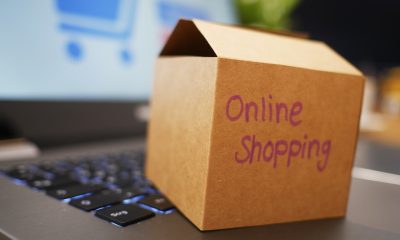Business
What B2B e-commerce can learn from B2C model developments
Whether you are in the B2B or B2C arena, the customer always comes first. Businesses with a large range of products for different market segments must create an online hub. Customers are looking for transparent and error-free experiences. Creating an e-commerce website used to mean developing a desktop site with a mobile app. The trend now is toward offering a first-class mobile experience.

Retail stores can no longer survive without offering a comprehensive service to their customers. They have to build an online presence and make sure that they are on their clients’ radar at all times in order to thrive — and sometimes, to merely survive. In addition, it is essential that they keep a physical presence. Customers still value the tactile experience that provide physical stores, but they now demand that these stores be connected to online stores. How long will it take business-to-business commerce to take advantage of the technology which now drives the retail industry?
B2B is lagging behind B2C when it comes to e-commerce
Unlike B2C, the B2B e-commerce landscape is more fragmented. Manufacturers, wholesalers, and distributors used to undertake transactions over the phone or in writing. Some still do. Many businessmen only got to live their first online ordering experience in 2018. Businesses can buy goods and services not only directly on a supplier’s website but also via various third-party sales platforms and marketplaces.
Forrester Research shows a significant change in the behavior of B2B buyers, who increasingly conduct e-procurement market analyses and communicate more widely with their suppliers in real-time. A self-service environment has great potential for generating cost savings. Forrester Research noticed that durable goods constitute the B2B portion with the fastest growth. It encompasses parts and supplies of motor vehicles, including petroleum products, as well as electric and electronic devices and industrial equipment.
B2B is moving forward with digital transformation
Cutting-edge e-commerce vendors will sometimes supply their final users with applications allowing them to directly obtain diagnoses, technical information, installation guides, as well as data about local stock availability and ordering capability. Since its launch in 2015, the leading online retailer rather aggressively moved to the B2B sector, attracting more than 1 million professional customers. In China, Alibaba is responsible for 80% of all online sales and is essentially a B2B portal connecting western businesses and Chinese manufacturers.
Online shopping has become the norm for millennials
Younger procurement specialists are more aware of the power of technology and the part it plays in the B2B selling process. They are used to buying items online for their own personal use and wish businesses benefited from the same processes, with the same user-friendly, intuitive features. Understanding the change in the decrease of human interactions is more and more important to buy efficiently. Transaction and communication facilities must be available 24/7.
Make things easier for customers
Whether you are in the B2B or B2C arena, the customer always comes first. Businesses with a large range of products for different market segments must create a personalized online hub depending on the specific needs of each procurement organization. Customers are looking for transparent and error-free experiences on all buying and interaction channels. No matter the platform, suppliers have to be aware of what their clients’ itineraries are and identify and fix friction points. Websites sometimes load too slowly; messages are sometimes too impersonal. Maintaining a high-quality, high-performance website is key to staying competitive.
One effective way of keeping customers satisfied is to have a visible and reactive online presence on social media to be able to solve problems on a 24/7 basis.
M-commerce development: The power of mobile
Creating an e-commerce website used to mean developing a desktop site with an added mobile app. The trend now is toward offering a first-class mobile experience. Mobile apps allow for all-new B2B and B2C procurement practices: 3D product animations, voice command, and real-time inventory information.
Retail purchasers increasingly favor the simpler payment methods that mobile has to offer, including fingerprints and facial recognition.
A picture is worth a thousand words
Truer words have rarely been spoken, especially when it comes to e-commerce. To stay ahead of the competition, businesses don’t just add pictures to their websites and trading platforms anymore; they now resort to high-quality videos and animated content.
The full spectrum of B2B possibilities has not yet been explored. However, 20 years of B2C experience can teach us a lot about using frictionless payment. It reduces the need for paper receipts and allows for a reshuffling of conventional work hours.
—
(Featured image by Andrea Piacquadio via Pexels)
DISCLAIMER: This article was written by a third party contributor and does not reflect the opinion of Born2Invest, its management, staff or its associates. Please review our disclaimer for more information.
This article may include forward-looking statements. These forward-looking statements generally are identified by the words “believe,” “project,” “estimate,” “become,” “plan,” “will,” and similar expressions. These forward-looking statements involve known and unknown risks as well as uncertainties, including those discussed in the following cautionary statements and elsewhere in this article and on this site. Although the Company may believe that its expectations are based on reasonable assumptions, the actual results that the Company may achieve may differ materially from any forward-looking statements, which reflect the opinions of the management of the Company only as of the date hereof. Additionally, please make sure to read these important disclosures.

-

 Impact Investing2 weeks ago
Impact Investing2 weeks agoHigh Awareness, Low Adoption: The VSME Challenge for European SMEs
-

 Crypto5 days ago
Crypto5 days agoBitcoin in 2025: Mainstream Momentum, Price Weakness, and a Pivotal Year Ahead
-

 Biotech2 weeks ago
Biotech2 weeks agoCAR-T Therapies: From Breakthrough Cancer Treatment to Faster, Safer, and More Accessible Immunotherapy
-

 Fintech5 days ago
Fintech5 days agoPakistan’s Digital Finance Paradox: Growth, Fraud, and the Fight for Trust
























